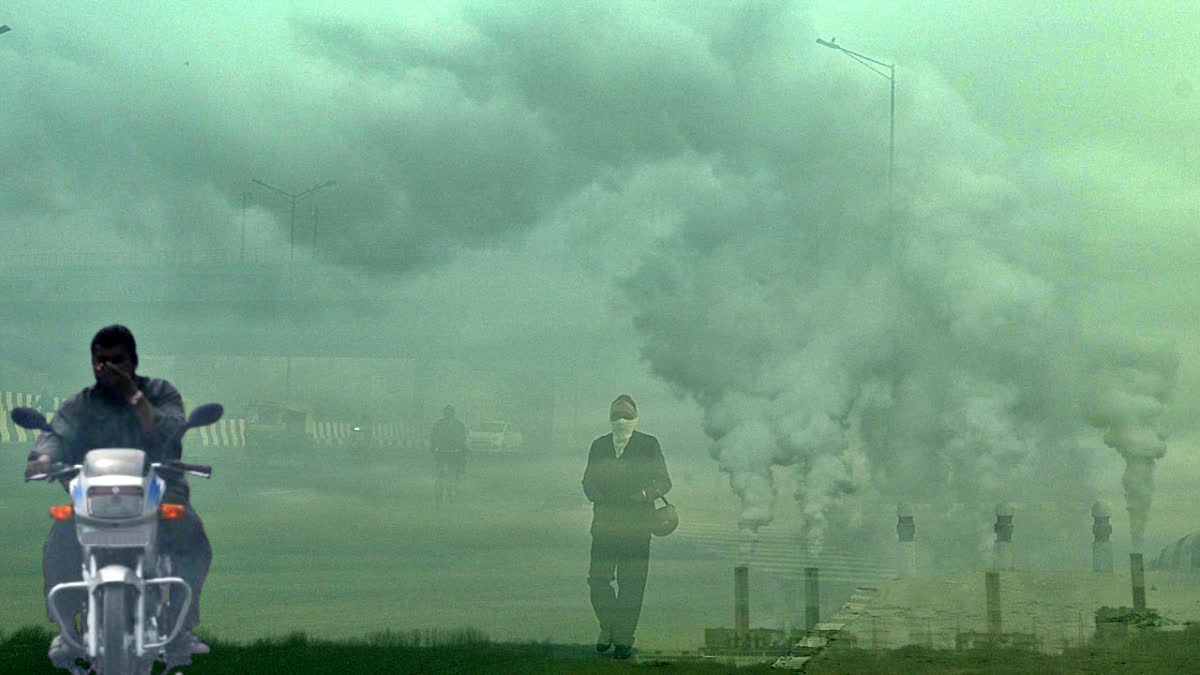Hyderabad: A recent Lancet Planetary Health study 'Ambient air pollution and daily mortality in ten cities of India' has made some alarming revelations, attributing as many as 33,000 deaths annually to air pollution related issues in India.
In an exclusive interview with ETV Bharat, Bhargav Krishna, the author of the study, explained what the study focused on and how air pollution particularly Particulate Matter 2.5 (PM 2.5) had a significant impact on a person's health.
Bhargav holds a Doctorate in Public Health from Harvard T. H. Chan School of Public Health, a Master’s degree in Global Environmental Change from King's College London and an undergraduate degree in Biotechnology from Anna University, Chennai. He is also an adjunct faculty member at the Public Health Foundation of India (PHFI).
Here are the excerpts from the interview:
ETV Bharat (ETB): Tell us about your study published in The Lancet Planetary Health. Is this the first of its kind research?
Bhargav Krishna (BK): Yes, absolutely! This study that we've conducted, has taken us about a year and a half to complete. We studied mortality from short-term air pollution exposure—air pollution that has occurred on the same day and the previous day—across 10 cities. This has not been done before in India and so this is the first time as well that we are generating new evidence on how air pollution exposure in the short term affects mortality in places like Bengaluru, Chennai, Hyderabad, Kolkata, Pune and Mumbai.
This study generates insights that are highly relevant for policy because we are seeing that the impact of air pollution isn't restricted only to northern cities like Delhi or other cities in the Indo Gangetic plain, but the effects of air pollution can be felt even in cities otherwise considered relatively cleaner in terms of their air pollution levels.
ETB: Across the report, the term PM 2.5 is omnipresent. What is it and how is it measured?
BK: If I were to put it in simple terms, there are two types of pollution that are generated when you burn any kind of fuel--vehicular, industrial or cookstove emissions. Particulate pollutants are small microscopic particles generated as a by-product of the combustion of gaseous pollutants--carbon dioxide, carbon monoxide, nitrogen oxides etc. PM 2.5 which is the pollutant that we have chosen to focus on is particulate matter which is smaller than 2 and a half microns in size. It is extremely small compared to even the thickness of a human hair.
Why PM 2.5 is relevant is for two reasons. One, PM 2.5 can travel deep into the lungs and even into the bloodstream and can cause all sorts of harm to both lungs as well as the blood circulatory system in the heart. Second, the particles the PM 2.5 is often made up of are highly toxic components and, as such, it has significant effects on health.
ETB: How can we protect ourselves from this particulate matter?
BK: During the pre-Covid times, people used to wear masks at least in northern India and particularly in Delhi, due to high pollution during winters. N95 masks or similar grade masks that were used prominently during Covid can do equally well in protecting against air pollution exposure.
ETB: According to the report, India is not following WHO guideline value of 15 micrograms per cubic metres. We have our own standards, so why should we be worried?
BK: The WHO guideline is a recommendation based on global health evidence it has provided to all member nations. So based on its systematic review of all of the evidence that is published around the world, it (WHO) has set what it considers a guideline value for what is acceptable levels of exposure.
So 15 micrograms over the course of a day not to be exceeded more than a few times a year and over the course of an entire year less than 5 micrograms, is the WHO guideline. Now if you compare that to what we are experiencing on an annual basis in a city like Delhi, the number is astounding. In our study, we found the average PM 2.5 levels in Delhi was above 110 micrograms. That is 20 times higher than what annual average exposure should be. Our national ambient air quality standards, which were last revised in 2009, are significantly weak.
Why this is a problem is because in our study we are able to see significant effects on mortality even below the Indian standard and above the WHO standard. It clearly means that our standard isn't doing particularly well in terms of protecting public health.
